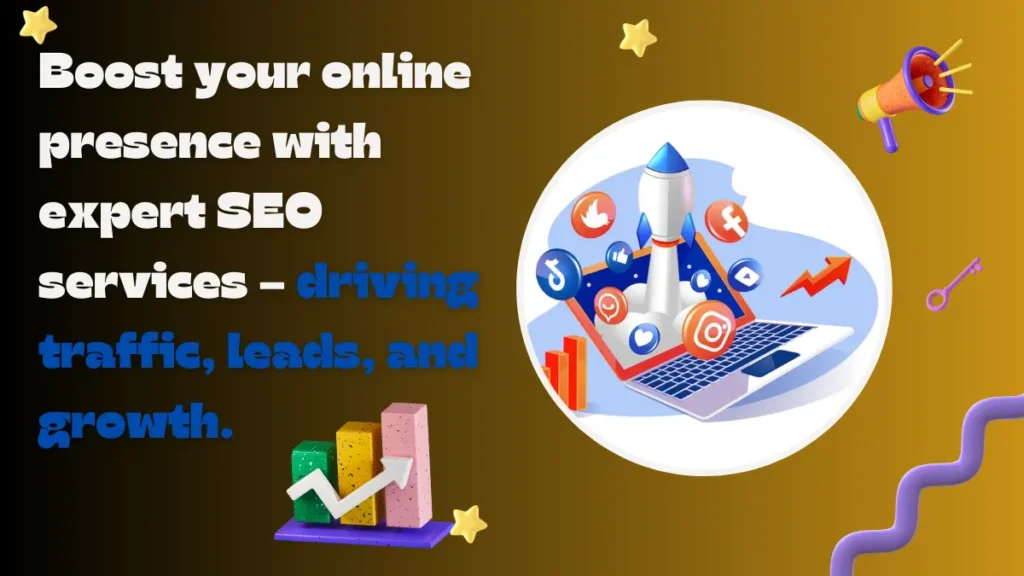Finding the right keywords is key to getting people to a website. The more the site shows up in search results for things people are searching for, the more traffic it can get. However, getting people on the website is not the only purpose; you also want them to translate their interest into purchases.
This is where “buyer intent keywords” come in. Those are words people use when they’re ready to purchase, not just browse. By targeting these keywords, you can build a website that makes sales, not just receives site visitors.
In this article, we’re going to discover different types of buyer intent keywords and show how to find those that bring greater sales.
Table of Contents
What are Buyer Intent Keywords?
Buyer intent keywords are the phrases and expressions that people use when doing internet searches. They give the sellers clues about what a person is looking for. Basically, they tell them how much someone is ready to buy.
These keywords are categorized into two main parts:
- High-intent keywords show that someone is ready to buy. They are generally unique and very targeted. For example, if a person searches for “purple iPhone 14 Pro Max,” they’re probably ready to shop for a specific smartphone. These keywords are like gold for businesses because people using them are likely to make a purchase soon.
- Low-intent keywords display that someone is just starting to think about a product or service. They may look for something like “budget smartphones 2024.” Those people are still exploring their options and are not ready to make a purchase yet.
By understanding these categories, businesses can create content and ads that communicate with people at different stages of their buying journey. This facilitates businesses connecting with potential customers and increasing sales.
Why do Buyer Intent Keywords Matter?
Using the right phrases can make a huge difference in getting people to make a purchase. Moreover, using these keywords can add value to your business. Here’s how:
Boost Sales
When these keywords are used, businesses can make more sales by targeting people who are interested in buying a specific product. It is like having communication with someone who already knows what they want and just needs a little push.
For example, a shoe seller can use keywords like “ladies’s red size 8 running footwear” to appeal to people who are looking to buy rather than the ones just exploring their options. By matching services or products offered to these specific needs, businesses can boost their chances of making a sale.
Build Credibility
Using buyer-motive keywords also helps people trust a business. When a brand or a seller answers their questions and solves their problems, customers start to see them as an expert. It is like being a helpful friend who knows all of the answers.
By offering valuable information and addressing their concerns immediately, businesses build credibility and establish themselves as a reliable source. Sharing feedback from satisfied customers can make people trust these businesses even more.
Enhanced Online Visibility
Using the proper keywords can help people find a website when they search online. There are special types of keywords called long-tail keywords that are not as popular but can be easier to rank for. These keywords regularly bring in those who are interested in what you offer, so they’re much more likely to buy.

Instead of targeting the wide term “shoes,” it’s easier to attract a more specific audience and boost the chances of converting visitors into buyers.
Using such a keyword could also create content that people love and that search engines like Google and Yahoo like.
Types of Buyer Intent Keywords
To understand what customers are searching for online, businesses can use different types of keywords. This helps them figure out what people want and how to reach them.
Transactional Keywords
These keywords indicate that potential customers are ready to make a purchase. They use phrases like “purchase,” “order,” or “buy.” For example, “buy an iPhone 14” or “order pizza online.” Businesses can use these keywords to target customers who are in the final stages of their buying journey.
Commercial Keywords
People use these keywords while they’re still considering buying something but aren’t ready yet. They are looking for information to help them decide. Phrases like “best,” “compare,” or “review” are frequently used here. For instance, “best running shoes for men” or “compare laptop prices.” Groups can use commercial keywords to educate potential clients and build trust.
Navigational Keywords
These keywords show that people are searching for a particular website or page. They often use the name of a company or website. For example, “Amazon homepage” or “Google search.” Even as important for logo awareness, businesses usually focus less on navigational keywords when it comes to SEO.
Location-Based Keywords
These keywords tell that people are looking for something close to them. They include the name of a city, state, or neighborhood. For example, “pizza near me” or “best eating places in New York.” Local businesses can benefit significantly from targeting location-based keywords to draw customers to their location.
Long-Tail Keywords
Those keywords are longer and more specific. They get fewer searches, but the people who use them are often really interested in what they’re looking for. For example, “red leather sofa with chaise.” Businesses can use long-tail keywords to target specific niches and improve conversion rates.

By understanding those different forms of keywords, businesses can create targeted content and advertising campaigns that reach the right customers at the right time.
Decision-Stage Keywords
Decision-stage keywords are the holy grail for marketers. Those are the keywords that people use when they are practically ready to buy. They’ve done their research, compared options, and are now focused on making a purchase.
As mentioned, B2C decision-stage keywords often revolve around immediate action and purchase details. Here are some additional examples:
- In Stock
- Ships Today
- Local Stock
- Limited Time Offer
- Best Deal
Effective Methods to Find Buyer Intent Keywords
Businesses have to understand what people are searching for. There are different methods that they can use to find appropriate buyer intent keywords. Some tips and tactics include:
Look For Common Buyer Keywords
These are trendy words that people use when they want to shop for something. They’re like the simple building blocks of keyword research. For example, if a business sells footwear, some common consumer keywords might be “buy shoes,” “best shoes,” or “cheap shoes.” These keywords are very competitive, but they are still able to bring in customers.
Look For Problem-Fixing Keywords
People often look for solutions to their problems. A product or service offering should solve a problem for the customers. To begin with, consider what problems a certain product solves and use those as keywords. For example, if you sell sunglasses, use keywords like “reduce eye strain from the sun” or “protect eyes from UV rays.”
Read Competitor in Your Niche
Another effective way to find buyer intent keywords is to research competitors in your niche. Study competitors and analyze what keywords are being used more often to drive more conversions and boost sales. Use tools like Ahrefs or other tools to examine which keywords fit and resonate with the targeted audience. Not every keyword that the competitor uses is good for the website, so be mindful of that. Therefore, be sure to avoid the guesswork and instead focus on keywords relevant to your niche and audience.
For example, instead of using competitive keywords like “best jewelry brand,” go for something more niche-based like “best rings for a wedding.”.
Add Year to Keywords
To find people who want the most recent information, add the current year to the keywords. For example, instead of using “best smartphones,” try “best smartphones 2024.” This helps find people who are looking for the latest products. It additionally shows search engines that the information used is up-to-date, which can help a website rank higher.
Look for Comparison Keywords
People often compare different products before they purchase them. They could search for things like “best running shoes for men” or “Samsung Note Series Vs Apple SE.” By locating these keywords, show people why your product is better than other competitors.
Discount Keywords
People like to save money. They often search for keywords like “discount shoes” or “reasonably priced laptops.” By offering deals and promotions, businesses can entice more customers.
Don’t Ignore Google Search Suggestions
Google must be the ultimate one-stop shop for finding keywords. When you type something into the search bar, Google suggests other associated keywords. Either use those or take help from Google’s autocomplete feature to find popular search phrases.
Use Keyword Research Tools
There are many online tools used to find keywords. Those tools can show the popular keywords, how much competition there is, and other useful information. Some popular keyword research tools include Google Keyword Planner, Semrush, and Ahrefs.
Remember, it’s crucial to focus on keywords that are relevant to your products or services and is being used by the audience.
Best Placement of Buyer Intent Keywords
As mentioned, buyer intent keywords are useful because they give insight into what the potential customers might be looking to buy next. By strategically placing these keywords throughout the site, you can significantly improve the chances of attracting high-quality traffic and converting visitors into customers. Some important places to put these keywords include the following:
- Title Tags and Meta Descriptions
- Headings and Subheadings
- Main Body
- Call-to-actions (CTAs)
Make sure to put those keywords in crucial places on the website. Additionally, write blog posts and articles using these keywords to answer people’s questions.
It is crucial to keep track of which keywords are bringing in more traffic and which ones aren’t. This can help make changes and enhance the results.
Buyer Intent Keywords: A Treasure Trove To Boost Conversions
Buyer intent keywords are like a treasure map leading to potential clients. By understanding and effectively using these keywords, boost the website’s visibility, attract qualified leads, and ultimately drive sales.
By using buyer intent keywords, attract more customers to the website and increase the sales.
Want to boost ROI and achieve your digital marketing goals? Let EvolveDash handle it. By implementing the best SEO and marketing practices, we can give your brand the much-needed boost.
FAQs
1. What are buyer intent keywords?
Buyer intent keywords are search terms that indicate the user’s readiness to make a purchase. They help businesses identify potential customers who are closer to making a buying decision.
2. How do buyer intent keywords help businesses?
By targeting buyer intent keywords, businesses can attract visitors who are already considering making a purchase, improving the chances of conversion into sales.
3. What is the difference between high-intent and low-intent keywords?
High-intent keywords show that users are ready to buy, while low-intent keywords indicate users are still in the research phase and not yet ready to purchase.
4. How can I find the best buyer intent keywords?
You can find buyer intent keywords by researching common consumer terms, analyzing competitor strategies, using keyword research tools, and looking for problem-solving keywords.
5. Where should I place buyer intent keywords on my website?
Place these keywords in key areas like title tags, meta descriptions, headings, subheadings, the main body of content, and call-to-action buttons to improve visibility and conversions.



















